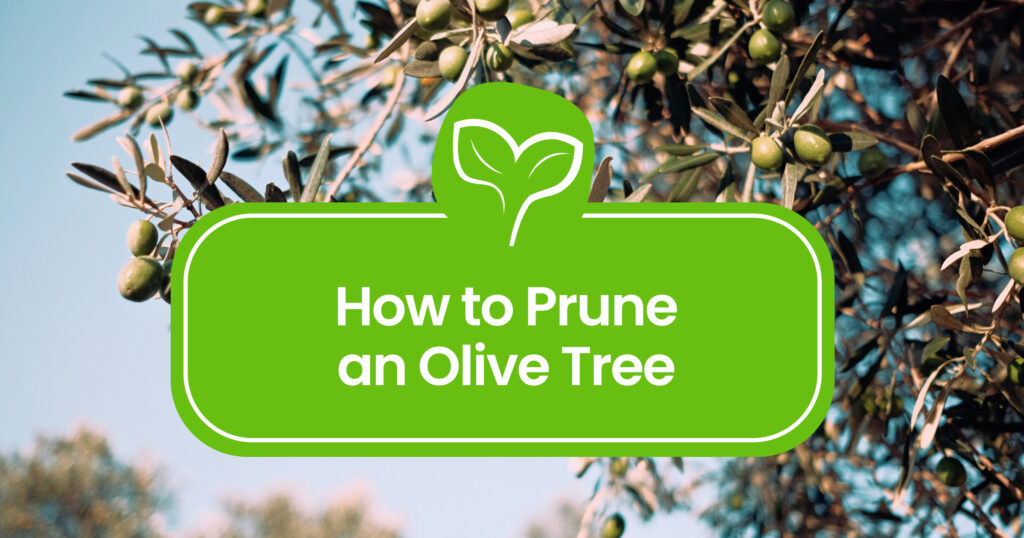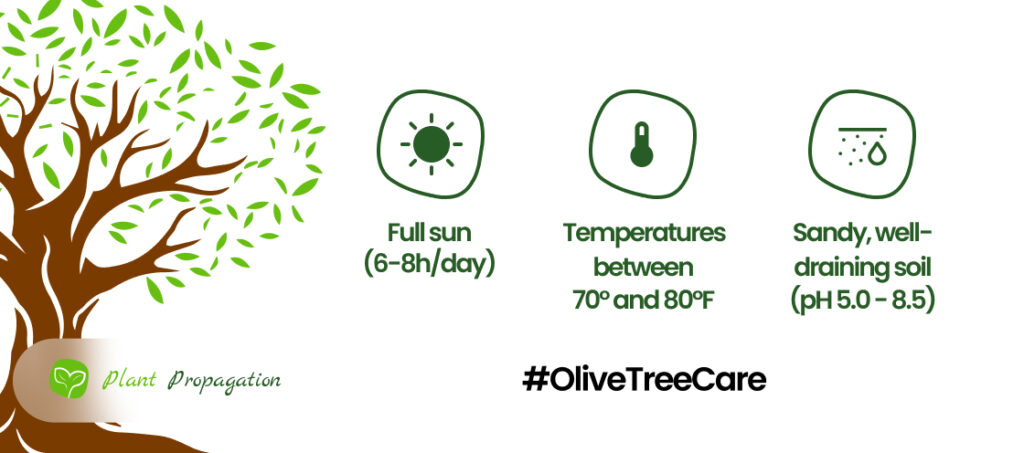
Olive trees are wonderful additions to gardens and orchards, but to keep them thriving, pruning becomes essential. Why? Well, first of all, sunlight is key for olive trees to bear fruit; shaded parts yield less. By allowing sunshine into the tree’s core, fruiting improves significantly.
These trees start slow and need minimal pruning initially, fostering strong and healthy growth. As your tree matures, thinning it out becomes vital, especially in warmer regions.
In this guide, we’ll navigate the nuances of optimal pruning, covering the ideal timing, fundamental techniques, essential tools, and a detailed step-by-step process. Get ready to learn how to prune an olive tree the right way, fostering healthy and fruitful growth.
When to prune Olive Trees
Timing is everything when it comes to pruning your olive tree. The sweet spot for this task is post-spring, ideally late spring to early summer, once the frosty chill has bid its adieu. This timing aligns with the conclusion of the blooming phase, allowing for the perfect window to wield those pruning shears. Pruning during this period avoids disrupting the tree’s upcoming fruiting season while ensuring it receives the necessary care and shaping. By waiting, you give your olive tree the best chance to flourish and bear fruit abundantly in the coming season.
The Best Timing for Olive Tree Pruning
- For young olive trees, the initial pruning sets the stage for their future growth. Ideally, start shaping these saplings in their early years. This involves ONLY light pruning to encourage sturdy branching and a balanced structure. Aim for late spring or early summer, once the risk of frost has passed, to shape these young trees. Remember, excessive pruning will hurt young trees and can stun their growth for years.
- Mature olive trees have different needs. The bulk of their pruning should still occur in late spring or early summer, after the flowering phase, to avoid interfering with fruit production. However, there are exceptions. If corrective measures are needed, like addressing diseased branches or immediate hazards, pruning can be done in any season. Older olive trees can bounce back from excessive pruning pretty fast – if it is done in the right season.
Exception to the rule
There are scenarios where off-season pruning might be necessary. For instance, removing dead or damaged branches should be done promptly, regardless of the season, to prevent further decay or risks to the tree’s health.
Olive Tree Pruning Basics
Pruning your olive tree isn’t just about trimming branches randomly – you need to know what you are doing. Here are three fundamental techniques that will sculpt your tree’s growth, structure, and productivity:
Head Cut:
This technique involves trimming the top part of the central stem or tall branches. Its primary purpose is to control the tree’s height and encourage lateral growth. By doing this, you stimulate the growth of side branches, creating a bushier canopy and promoting a more balanced structure. It also enhances sunlight exposure to lower branches, ultimately increasing fruit production. If you want to harvest olives annually, this is your go-to technique for pruning Olive trees.
Thinning Cut:
The focus here is on selective trimming. Removing crowded, crossing, or inward-growing branches helps to improve airflow and allows sunlight to penetrate deeper into the tree’s interior. This not only reduces the risk of disease by enhancing air circulation but also ensures that each branch receives enough light for optimal growth and fruit development.
Vase Pruning:
This is the most common way of pruning Olive trees and for a good reason. By removing central branches and excess growth towards the tree’s center, you create an open structure resembling a vase. Vase pruning maximizes sunlight penetration throughout the tree, ensuring even distribution of light and encouraging the production of fruit-bearing lateral branches. This results in easy harvesting and maintenance while promoting healthy growth patterns.

Each technique plays a pivotal role in shaping the tree’s structure, ensuring sufficient light exposure, airflow, and ultimately, bolstering its fruit-bearing potential. These pruning methods are key to nurturing a healthy, productive olive tree.
Tools you’ll need
Time to gear up! Here’s what you’ll need:
- Pruning Shears: Perfect for small branches and precise cuts.
- Loppers: For those thicker branches that need a bit more muscle.
- Pruning Saw: Your go-to for larger branches.
- Gloves: Protect those hands!
- Safety Glasses: You want to shield your eyes from rouge branches.

How to Prune an Olive Tree Step-by-Step
1. Assess the Tree: Start by examining the tree for dead, diseased, or crossing branches. Identify areas needing attention to enhance the tree’s structure.
2. Begin with Thinning Cuts: Using pruning shears, remove any overcrowded or inward-growing branches. Aim to create space within the tree for better airflow and light penetration.
3. Perform Head Cuts: Trim the top part of the central stem or excessively tall branches to encourage lateral growth. Use loppers for thicker branches to maintain a balanced canopy.
4. Vase Pruning: Carefully trim branches towards the tree’s center to create an open vase-like shape. Remove excess growth obstructing sunlight from reaching inner branches.
5. Assess and Refine: Step back and evaluate the tree’s overall appearance. Make final adjustments to ensure a balanced structure and an open canopy.
6. Wound Care (If Needed): Apply wound dressing to larger cuts to protect the exposed areas from pests or diseases.
Aftercare
Once you’ve finished pruning your olive tree, it’s time to provide some tender loving care to support its recovery and future growth:
- Keep a watchful eye on your tree post-pruning. Monitor how it responds to the cuts made and observe its overall health.
- Ensure the tree gets enough water, especially during the post-pruning period. Proper hydration aids in recovery and encourages new growth. Older trees might need to be watered only once per month, but younger ones get thirsty weekly.
- Larger cuts might benefit from a coat of wound dressing to protect them from potential infections. Apply as recommended by gardening experts.
- Consider feeding your olive tree with a balanced fertilizer to provide essential nutrients and support new growth. Follow recommended dosages and application methods.
- Regularly inspect your olive tree for any signs of new growth, disease, or additional pruning needs. Address these promptly to maintain the tree’s health.

Remember, aftercare is as crucial as the pruning itself. Providing the right conditions and care post-pruning allows your olive tree to thrive, ensuring a healthy and bountiful harvest in the seasons to come.
Frequently Asked Questions
To prune your olive tree wait 3 years post-planting. Prune after the fourth year, preferably in late spring or early summer. Avoid rainy or cold seasons for healthier cuts.
Can you prune olive trees in autumn?
After they reach the age of 4, the best time to prune olive trees is generally late spring or early summer. However, as long as there is no threat of frost, you can do it in early autumn.
Do you prune the top of olive tree?
When pruning an olive tree, you want to keep the top open. This will allow the tree to focus its energy on the lower, more productive parts.
Can I prune olive tree in summer?
Spring or early summer is the prime time to prune olive trees. It’s when the tree begins budding, benefiting from ample light and optimal temperatures for healing wounds safely.
What is the best shape for an olive tree?
For an olive tree, aiming for a wine glass shape is the best, featuring three to four primary branches stemming from the main trunk. It helps sunlight reach inside, making your tree healthier and giving you more olives.

